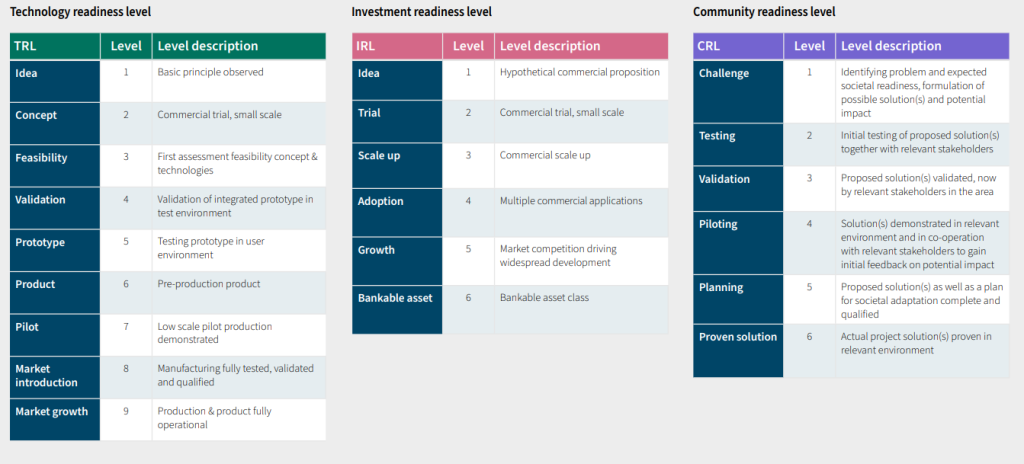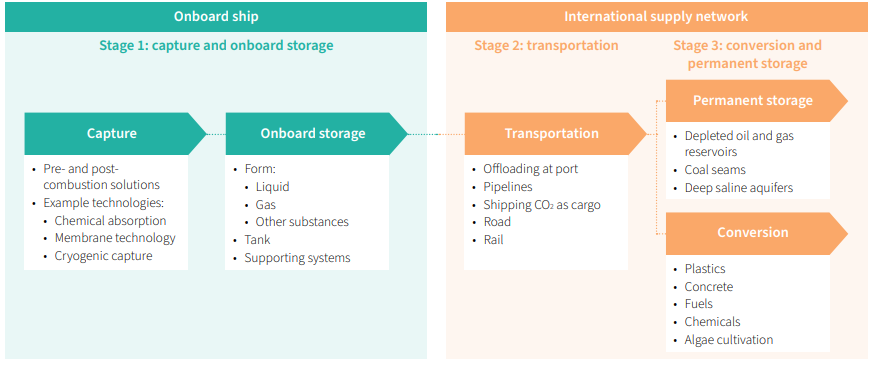Lloyd’s Register (LR) today published a report to analyze aspects of onboard carbon capture, utilization, and storage (OCCUS) in the shipping industry.
The report provides an analysis of the technology readiness level (TRL), investment readiness level (IRL) and community readiness level (CRL) of onboard carbon capture, utilisation, and storage (OCCUS) in the shipping industry. It highlights key observations and priorities that have been identified to move OCCUS adoption forward.
Key findings:
- The adoption of onboard carbon capture systems is dependent on the economic feasibility for maritime supply chain stakeholders. The formation of viable economic cases for each player in the supply chain is needed to scale up adoption of Onboard Carbon Capture Utilisation and Storage (OCCUS).
- Technology readiness for OCCUS is significantly higher than its investment and community readiness, largely due to the development and usage of carbon capture technology outside of the maritime industry.
- Regulations will need to be updated to address the practical challenges, including carbon accounting and how OCCUS aligns with MARPOL regulations.
- There is also a need for significant infrastructure scaling and investment for onboard and offloading solutions to drive adoption.
- Safety and operational factors surrounding offloading of liquified CO2 as a result of the carbon capture process need to be considered.
Readiness levels

Alternative solutions
There are several alternative solutions being explored for carbon capture and storage onboard ships. Precombustion capture involves converting the ship’s fuel into a gas and then capturing the carbon dioxide (CO2) before combustion or removing carbon as a solid such as graphite and creating hydrogen. Post-combustion capture involves capturing CO2 from the ship’s exhaust gas by one of several mechanisms:
1. Chemical absorption: CO2 in the exhaust is absorbed by a chemical solvent
(e.g. monoethanolamine).
2. Membrane technology: selective permeation of gases in the exhaust through a physical membrane.
3. Cryogenic capture: cooling the exhaust gas to very low temperatures, which causes the CO2 to condense into a liquid that can be stored.
4. Oxy-fuel combustion: burning the ship’s fuel in an oxygen-rich environment to produce a CO2-rich exhaust gas that is then captured.
5. Solid sorbent capture: capturing CO2 using solid materials that adsorb CO2 molecules from the exhaust gas.
Onboard carbon capture and storage – supply chain

Conclusions
Outlining the need for an increase in investment readiness for OCCUS, the report concludes that evidence is required to validate the real-world performance of onboard capture technology, to ensure adopters can be assured of the technology’s emission reduction credentials.
The research suggests the solutions could play a significant role in the shipping industry’s journey towards zero carbon emissions, with OCCUS considered as a mid-term ‘step’ for ship operators and owners. OCCUS technology has potential for existing vessels where conversion to zero carbon fuel is cost prohibitive, thus increasing the lifetime of an asset.
LR Maritime Decarbonisation Hub’s research emphasises the need to focus on providing demonstrable evidence that OCCUS systems can help owners in meeting interim emissions regulations with existing vessels.
… said Charles Haskell, Director, LR Maritime Decarbonisation Hub
For further reading: GCMD, Lloyd’s Register join forces for liquefied carbon dioxide offloading concept study






























































